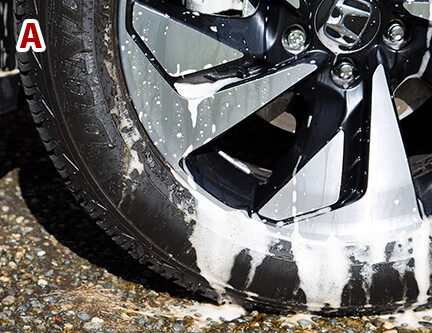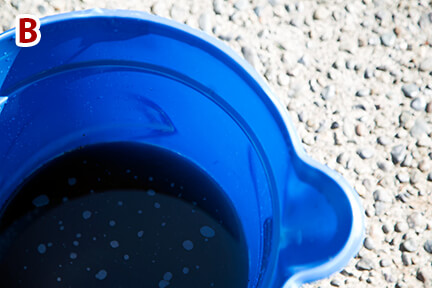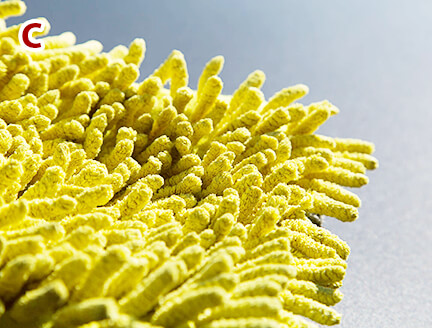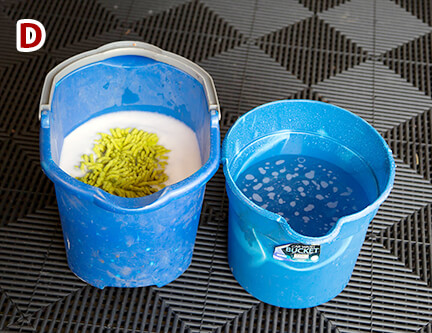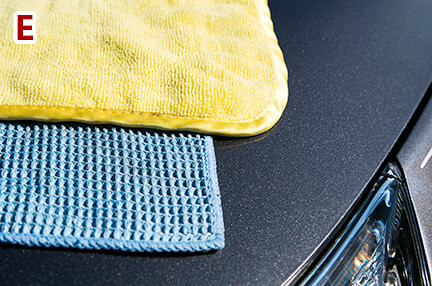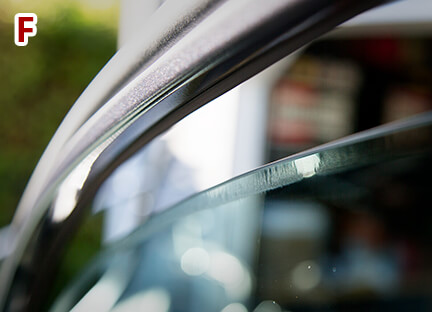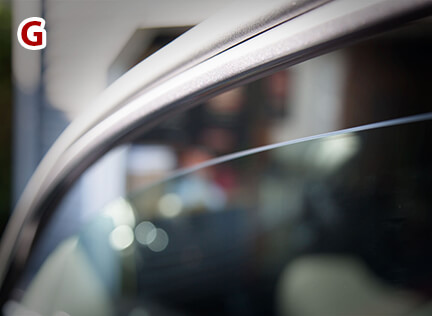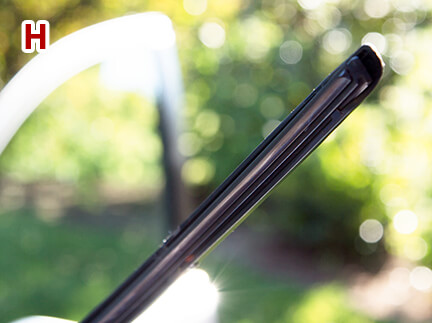Protect Your Car's Exterior - Washing Tips and Tricks
|
Having a regular routine to keep your car clean will significantly help preserve its overall value. Road grime, brake dust, tree sap, bugs and bird poop contain acids and grit that quickly start to scratch and eat away your vehicle’s protective top coat. A schedule of weekly washing and polishing every 3-6 months prevents the buildup of damaging substances that may harm a vehicle’s finish. I remember being sent out as a kid to wash the family mini-van. Armed with random rags, old bathroom towels and the bottle of Dawn from under the kitchen sink I was commissioned to go forth and conquer the army of bugs that had met their demise over the past week. Sound familiar? If that doesn't make you cringe, hopefully we'll change some washing procedures by the end of this article. We'll use the family CR-V to demonstrate the tips and tricks to prevent further damage during the washing process and keep your baby looking like new. Shade Find a nice shady spot and wait for the vehicle to cool. Washing a vehicle in direct sunlight or when it’s still warm makes it harder to prevent water spots. If its unusually hot or you must wash your car in the sun, be sure to keep it wet and cool with a regular spray of water. (A non-shaded driveway and desire to get the job done before 10pm forced our wash job into the sun and required a regular water rinse.) Spray Start with a thorough water spray to rinse away the top layer of dirt and grime. Lift up your windshield wipers, spray them off and leave them up for the remainder of the cleaning session. Pretreat Pre-treat stains (tree sap, bird deposits, bugs, etc.) with a spritz of detailer. Fresh out of spray detailer? A spray bottle with undiluted car wash soap works just as well. Wheels First Use a wheel and tire cleaner along with a wheel brush to clean the wheels first. Cleaning wheels lasts risks cleaner overspray being deposited on your freshly cleaned vehicle. Keep your wheel cleaning tools separate, and rinse your wash buckets before moving on to the vehicle body. (Check out how dirty our bucket was just after cleaning the wheels!) See Image A & B Suds Sponge Your ideal wash sponge is made of a soft, gentle natural fiber which won’t scratch a vehicles paint. It also has a deep nap or compartments where dirt and debris can accumulate. Flat towels and dense sponges are more likely to cause scratches and swirls. Natural sea sponges and plush wash mitts pull contaminants into the recesses, away from paint. See Image C Swirls Swirl marks are created when excess dirt is pushed around by the cleaning sponge. Use 2 buckets – 1 for shampoo and 1 to rinse. Before dipping back into the shampoo bucket, remove dirt from your sponge in the rinse bucket. See Image D Dry Don’t let your vehicle air dry or develop water spots. Upgrade your terry cloth and chamois to microfiber drying towels. While terry cloth and chamois harden with age (increasing the chance of swirls), microfiber is lint free, more absorbent, and longer lasting. Use a large waffle weave microfiber drying towel for your first pass. Use a microfiber detail towel to remove any remaining water then open the trunk, hood and doors to wipe out the door jambs and any extra nooks and crannies. See Image E Windows Most household glass cleaners contain ammonia, which is bad for vinyl upholstery and instrument panels. Plus it stinks. Use an ammonia free, streak free window cleaner. Lower the window to clean the upper edge. Wrap a microfiber towel around your hand to get the lower edge of the windshield. See Images F & G TIP: Many professional detailers use newspaper to effectively clean windshields to a streak-free shine! Wiper Blades Give the blades a thorough wiping to prevent streaks and scratches next time you use them. Now's a great time to give them a quick inspection for any signs of wear. See Image H Spray Wax Complete your wash with a spray wax or sealant to rejuvenate existing wax. Spray wax isn’t a substitute for your quarterly or semi-annual wax job, but will help prolong the benefits. You can even use the spray on your wheels to protect from dirt and brake dust. |
|

